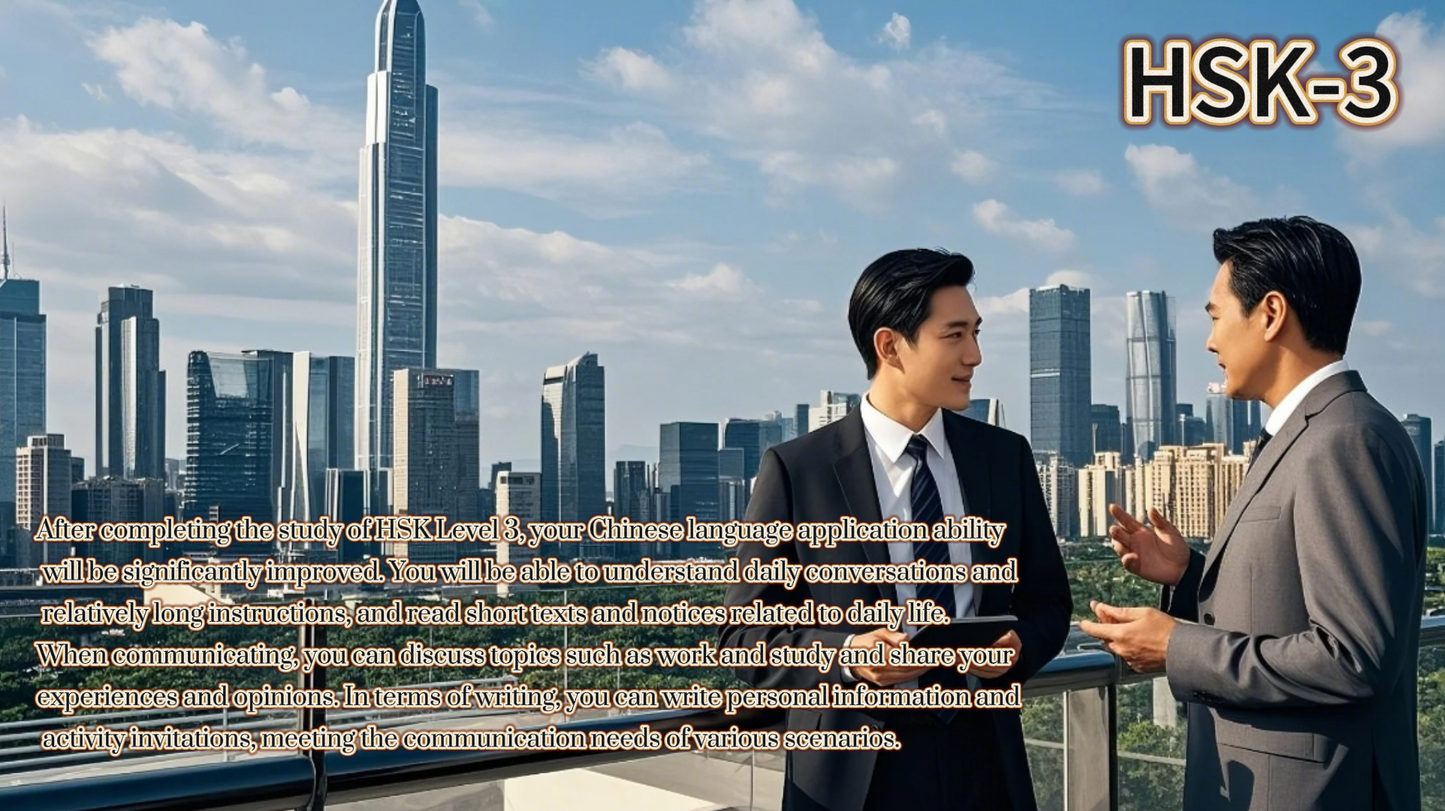Chinese language and culture
HSK-3
HSK-3
Couldn't load pickup availability
HSK Level 3 refers to the third level of the Chinese Proficiency Test.
Content and Format
· Listening: It takes about 30 minutes and there are a total of 30 questions. The question types include multiple-choice questions, fill-in-the-blank questions, etc. The listening materials contain dialogues and short passages in scenarios such as daily life, study, and work. The speaking speed is slightly faster than that of HSK Level 2, and it will involve some slightly more complex sentence patterns and expressions.
· Reading: It takes approximately 40 minutes, with 30 questions in total. There are question types like multiple-choice questions, true or false questions, matching questions, etc. The reading materials include various styles of writing such as narrative essays, expository essays, and argumentative essays. The content covers multiple fields such as society, culture, science and technology, and the economy. The length and difficulty of the articles have increased compared with HSK Level 2.
· Writing: It takes about 25 minutes, with 10 questions in total. Candidates are required to write short sentences in Chinese according to the given words and pictures, or complete sentence filling according to the prompts. This mainly examines candidates' Chinese character writing ability and the application of basic grammar.
Vocabulary Requirements
Candidates are required to master about 600 commonly used Chinese characters and 1,500 to 2,000 commonly used words. The vocabulary range has been further expanded, including some abstract concepts, professional terms, and more complex grammatical structures, such as "wénhuà" (culture), "lìshǐ" (history), "yīnwèi...suǒyǐ..." (because...so...), etc.
Ability Requirements
Candidates who pass the HSK Level 3 examination are able to communicate relatively smoothly in daily life, study, and work. They can have simple discussions on a wide range of topics, and are able to understand and express more complex information, such as describing the characteristics of things, expressing opinions and views, etc. In terms of reading, they are able to read articles of moderate difficulty and understand their main content and key information. In terms of writing, they are able to write simple short essays in Chinese to express their thoughts and feelings, and use grammar and vocabulary relatively accurately.
Share


